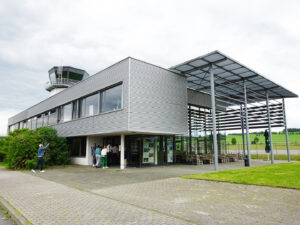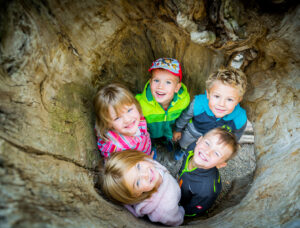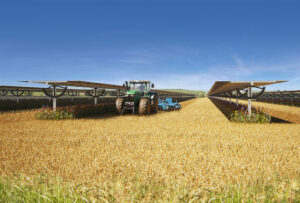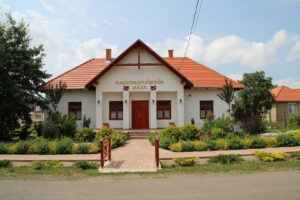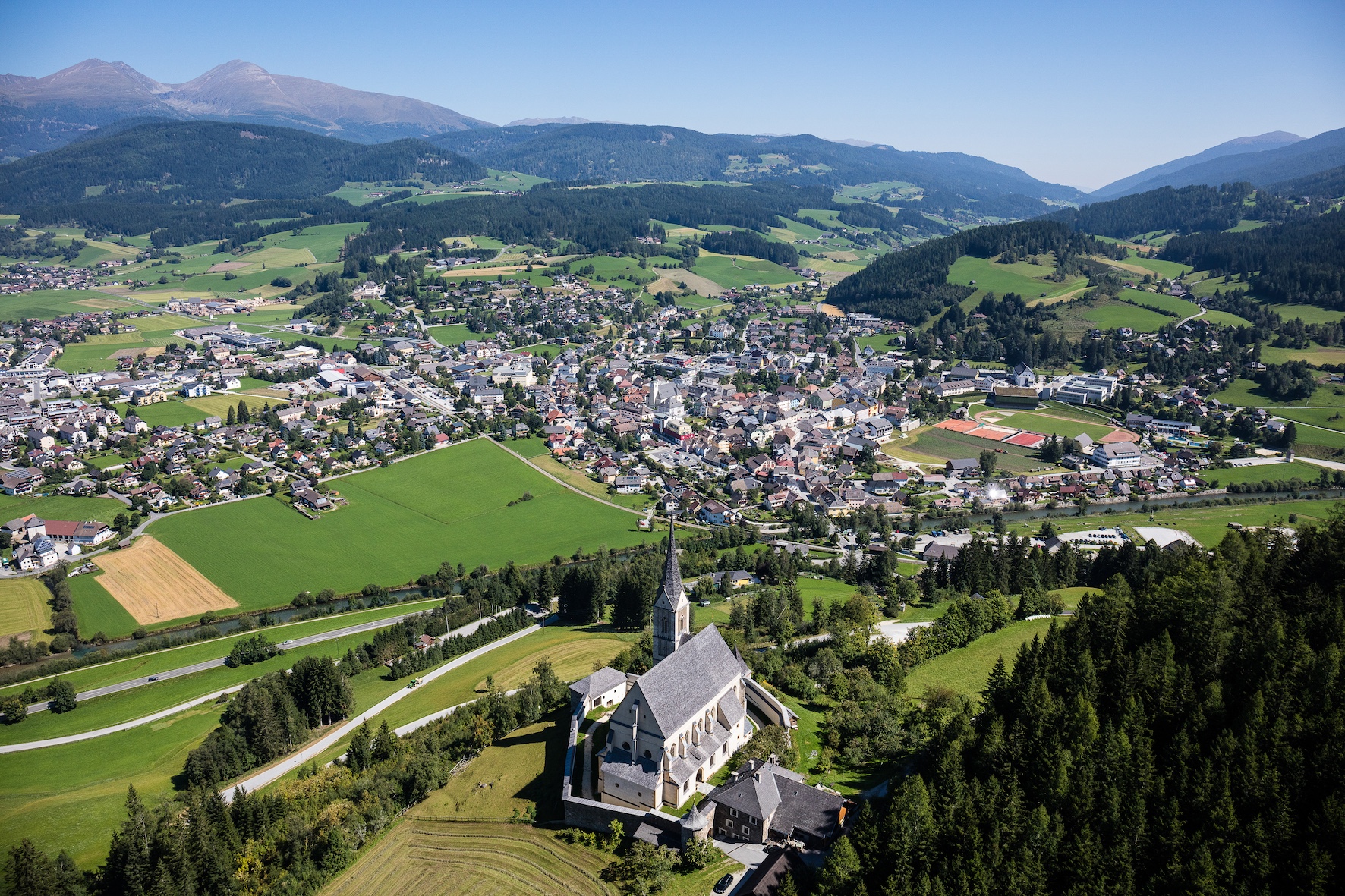
Tamsweg, Salzburg, Austria
The district capital of the Lungau, with around 5,700 inhabitants and eight districts, is located in the border triangle of Carinthia, Styria and southern Salzburger Land. The rather rural community is embedded in a wide valley basin at 1,024 m above sea level, right at the confluence of the Mur, Lungauer Taurach and Leißnitzbach, between the Nockberge and the Niedere Tauern. Tamsweg is more of a peripheral location within the state of Salzburg, but has connections to Styria and Carinthia. The place was first mentioned in 1156. Tamsweg has been a place of pilgrimage since the late Middle Ages, became the residence of the Barons of Kuenburg in 1571 and a lively trading center from 1700 onwards. The 19th century in the Lungau was characterized by population decline, poverty and development deficits. It was not until the turn of the 20th century that the construction of the Murtalbahn (1894), the power station, the water supply (1897) and the opening of the hospital (1908) started an upswing that laid the foundation for economic development and stability that last up to today.
In 2010, traffic congestion due to strong motorized individual traffic in the village became the starting point for a comprehensive, participatory development process. The result is visible. With traffic calming and a meeting zone – market of short distances – Tamsweg has implemented a coordinated concept for upgrading the village, which has significantly increased the quality of living in the village. With the relocation of the main road and thus the bypassing of the center, the redesign of the Kirchengasse and the adjacent market square was made possible and with additional traffic-related measures, the street space was regained as a space for encounter and recreation. The local supply is guaranteed by the historically grown COOP shopping center and numerous shops, which have been given perspectives for the future by the demarcation of the town centre.
In 1988, the historic core of Tamsweg was declared one of seven townscape protection zones in the province of Salzburg at the request of the municipality. The community works very goal-oriented. Major projects, such as traffic calming in the inner city, have broad social support. With the delimitation of the town centre, Tamsweg has taken an alternative development path for Austria, which strengthens the town economically and keeps it attractive. The protection of the townscape is an expression of the community’s identity. The awareness of living in harmony with the natural environment and wanting to strengthen regional economic cycles has found its counterpart in the UNESCO Biosphere Park, to which Tamsweg has belonged since 2012 along with the Salzburg Lungau.
Various initiatives have been launched to increase the appreciation of regional products and to bring consumers, producers and processors together. In 2016, for example, the Lungauer Kochwerk was initiated by the district farmer Roswitha Prodinger and set up as a regional cooking school together with a committed team of teachers, nutritional educators, farmers, adult educators and housekeepers. With the Lungau Enjoyment Mobile, a mobile kitchen on wheels, it supports the promotion of awareness for regional food among the population – from kindergarten age – by providing regional food such as Lungau meat, potatoes and dairy products at events, club festivals, markets and of course also in the cooking courses of the Lungauer Kochwerk.
The Lungau has been a climate and energy model region (KEM) since December 1, 2017. Tamsweg has been a member of the Austrian Climate Alliance since 1994. A biomass heating plant is connected to the district biomass heating network, and the municipality also offers free energy advice to the population. In the field of mobility, alternative transport options are used. Citizens can use regular public transport with a climate ticket, semester ticket for students or the Lungau card without having to use a car. The offer is supplemented by a nightliner and valley bus. Electromobility is supported by the community in its increasingly important role.
As the main town of the Lungau, Tamsweg has a whole range of social and cultural facilities. The Lungau cultural association, for example, has its headquarters there and offers activities such as the Tamsweg art gallery, a hands-on theater and more, as well as a house for emergency organizations. The castle Kuenburg, a historic manor which was renovated in an exemplary fashion, houses the music school, practice locations for the brass band and choirs, a facility for the integration of long-term unemployed, event rooms and much more. With the “House of Encounters” in the district of Sauerfeld, a stumbling block was successfully turned into a stepping stone. After the primary school was closed, a kindergarten, day care for seniors, clubhouses, a fire engine for the volunteer fire brigade, rooms for medical care and a physiotherapy practice were set up there. This allowed the function of the district center to be retained.
Tamsweg is a very good example of how social life and the challenges of change can be mastered with institutional and socially evolved organizational structures. New event formats in the areas of culture, customs, sociability and regional cuisine, such as the St. Leonhard music summer, the Lungau cultural association, Lungau folk culture, Samson parades, Z’sammsitz’n, Lungau cookery and the Tamsweg farmer’s market, enrich the community and also make it attractive to guests.
With its various initiatives, the municipality supports the building of bridges between generations. The transfer of knowledge through the biosphere park and the Lungau dialect atlas are exemplary. Culinary bridges are built beyond Tamsweg with the Lungauer Kochwerk to the Lungau and other regions. At “Z’sammsitz’n” bridges are built in an informal atmosphere. Citizens and guests meet in a sociable atmosphere every two weeks during the summer.
Evaluated: 2022









